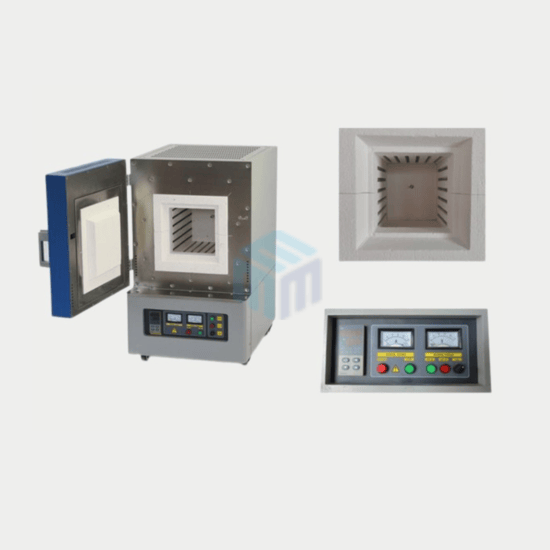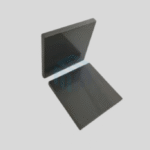When it comes to high-temperature processing, furnaces play a vital role across various industries and research settings. However, not all furnaces are created equal. Industrial furnaces and laboratory furnaces serve different purposes, are designed for distinct applications, and vary greatly in size, temperature range, and functionality. In this blog, we’ll explore the key differences between industrial furnaces and lab furnaces, helping you understand which type best suits your specific needs.
Industrial Furnaces
Industrial furnaces are designed for large-scale applications and typically operate at higher temperatures to process metals, glass, ceramics, and other materials. They are robust, high-capacity, and optimized for continuous, high-demand production environments.
Types of Industrial Furnaces
Blast Furnace
A blast furnace is a large, vertical shaft furnace used primarily in the industrial production of iron from iron ore. Known for its high efficiency and massive scale, the blast furnace operates at extremely high temperatures, using a continuous blast of hot air to facilitate the chemical reactions needed to extract molten iron. This process forms the foundation of steelmaking and is crucial to heavy industries worldwide:
- Application: Primarily used in the steel industry for smelting iron ore into molten iron.
- Size and Capacity: Capacities can exceed 1,000 tons of molten iron per day.
- Temperature Range: Up to 2,200°C (3,992°F).
- Benefits: Efficient for large-scale metal production.
- Limitations: High energy consumption, environmental impact due to carbon emissions.
Induction Furnace
An induction furnace is a type of electric furnace that uses electromagnetic induction to heat and melt metal. Unlike traditional furnaces that rely on combustion or resistive heating, induction furnaces generate heat directly within the metal using alternating current (AC) passing through a coil. This coil creates a magnetic field, inducing electric currents (eddy currents) in the metal, which results in rapid and efficient heating:
- Application: Melting and refining metals like steel, copper, and aluminum.
- Temperature Range: 1,200°C to 1,600°C (2,192°F to 2,912°F).
- Size and Capacity: Typically ranges from 1 to 100 tons per batch, with larger systems for high-volume operations.
- Benefits: Precise temperature control, high efficiency, minimal emissions.
- Limitations: Requires specialized setup and significant electrical power.
Rotary Kiln Furnace
A rotary kiln furnace is a cylindrical, rotating furnace used for high-temperature processing of materials in a continuous flow. It consists of a long steel drum lined with refractory bricks, slightly inclined to allow material to move through it as it rotates. Heat is applied either directly (by flame inside the kiln) or indirectly (from outside sources), depending on the process requirements:
- Application: Used in cement, lime, and refractory manufacturing industries.
- Temperature Range: 1,000°C to 1,450°C (1,832°F to 2,642°F).
- Size and Capacity: Lengths can exceed 100 meters with capacities ranging from 50 to 1,000 tons per day.
- Benefits: Continuous processing, large capacity.
- Limitations: High fuel consumption, requires extensive maintenance.
Electric Arc Furnace
An Electric Arc Furnace (EAF) is a type of furnace that melts metal—primarily scrap steel—using the intense heat generated by electric arcs between carbon electrodes and the metal charge. Unlike blast furnaces, which rely on chemical reduction with coke, EAFs use electricity as the primary energy source, offering greater flexibility and environmental advantages:
- Application: Melting scrap metal, primarily in the steel recycling industry.
- Temperature Range: 1,300°C to 1,800°C (2,372°F to 3,272°F).
- Size and Capacity: Can range from 5 to 400 tons per charge, depending on the size of the furnace.
- Benefits: Efficient for recycling, can reach high temperatures quickly.
- Limitations: High electricity consumption, potential for noise and dust pollution.
Annealing Furnace
An annealing furnace is a type of heat treatment furnace used to soften metal, improve ductility, relieve internal stresses, and refine the microstructure of materials. The annealing process involves heating the material to a specific temperature, holding it there for a defined period, and then cooling it slowly—typically in a controlled environment to prevent oxidation:
- Application: Softening metals or glass through heat treatment to improve workability.
- Temperature Range: 200°C to 1,100°C (392°F to 2,012°F).
- Size and Capacity: Often ranges from a few hundred to several tons, depending on the design.
- Benefits: Enhances material properties, prevents metal cracking.
- Limitations: Requires precise temperature control; often a slow process.
Laboratory Furnaces
Lab furnaces are designed for small-scale testing, research, and material development in labs. They offer precise temperature control, safety features, and are compact for benchtop or small-space applications.
Types of Laboratory Furnaces
Muffle Furnace
A muffle furnace is a high-temperature lab furnaces designed for uniform heating of samples without direct exposure to the flame or heating elements. It features an enclosed heating chamber, or “muffle,” which isolates the material being heated from combustion gases and contaminants, ensuring clean and controlled thermal processing:
- Application: Heating samples in ceramics, chemical, and metallurgical research.
- Size and Capacity: Typically has a volume of 1 to 5 liters, suitable for small sample sizes.
- Temperature Range: Up to 1,200°C (2,192°F).
- Benefits: Clean heat source, ideal for ashing and incineration.
- Limitations: Limited sample size, cannot be used for large-scale production.
Tube Furnace
A tube furnace is a specialized type of electric furnace used primarily for heating small samples in a controlled atmosphere or vacuum. It consists of a cylindrical heating chamber with a central tube—usually made of ceramic, quartz, or metal—through which samples are placed. The tube is heated by electric coils surrounding the chamber, providing uniform and precise temperature control:
- Application: Conducting thermal processing in a controlled atmosphere, often for material synthesis and oxidation.
- Temperature Range: 1,100°C to 1,800°C (2,012°F to 3,272°F).
- Size and Capacity: Usually has a tube length of 60 to 150 cm, with diameters ranging from 2 to 10 cm.
- Benefits: Excellent for creating precise, controlled environments.
- Limitations: Small capacity; requires careful handling of gases.
Ashing Furnace
An ashing furnace is a high-temperature laboratory furnace specifically designed for determining the ash content in various materials, such as food, plastics, coal, and other organic substances:
- Application: Determining the mineral content in food, fuel, and other organic materials by combusting the organic matter.
- Temperature Range: 600°C to 1,100°C (1,112°F to 2,012°F).
- Size and Capacity: Generally ranges from 1 to 3 liters, suitable for small sample analysis.
- Benefits: Accurately measures ash content, compact design for lab work.
- Limitations: Limited to small samples; only suitable for specific applications.
Vacuum Furnace
A vacuum furnace is a high-temperature furnace that operates in a sealed, low-pressure environment to prevent contamination and oxidation during thermal processing. By removing air and other reactive gases from the chamber, vacuum furnaces provide a clean atmosphere ideal for heat treating sensitive materials such as high-alloy steels, titanium, and superalloys:
- Application: Heat treatment in a vacuum environment, commonly used in metallurgy and material science research.
- Temperature Range: Up to 1,600°C (2,912°F).
- Size and Capacity: Typically designed for small batches, with chamber sizes from 10 to 100 liters.
- Benefits: Eliminates oxidation, ideal for sensitive materials.
- Limitations: Expensive, requires maintenance and special equipment to handle the vacuum.
Chamber Furnace
A chamber furnace is a type of furnace that features a sealed, insulated chamber where materials are heated to high temperatures. The chamber is typically rectangular or box-shaped, with a door that allows for easy loading and unloading of materials. These furnaces are designed for batch processing, where a single batch of material is placed inside the chamber and heated uniformly:
- Application: General-purpose lab furnace for heating, aging, or sterilizing samples.
- Temperature Range: 100°C to 1,200°C (212°F to 2,192°F).
- Size and Capacity: Usually has a capacity of 20 to 100 liters, allowing multiple samples.
- Benefits: Versatile; can handle multiple samples at once.
- Limitations: Limited to lower temperature ranges compared to other lab furnaces.
Read also: How to choose different types of furnaces for your research work and temp capabilities
Conclusion:
In summary, industrial furnaces and lab furnaces each play unique roles in their respective fields. Industrial furnaces are built for large-scale operations, providing high efficiency and durability to handle massive production needs. In contrast, lab furnaces are designed for precise, small-scale applications, offering control over temperature and atmosphere for experiments and material testing. Understanding these differences is crucial when selecting the appropriate furnace for your needs.
If you’re seeking high-quality, reliable furnaces tailored to your specific industry or research requirements, M-Kube Enterprise is here to help. Whether you need an industrial furnace for mass production or a lab furnace for your research projects, our expert team offers innovative solutions and outstanding support. Contact M-Kube Enterprise today to find the perfect furnace for your application!






